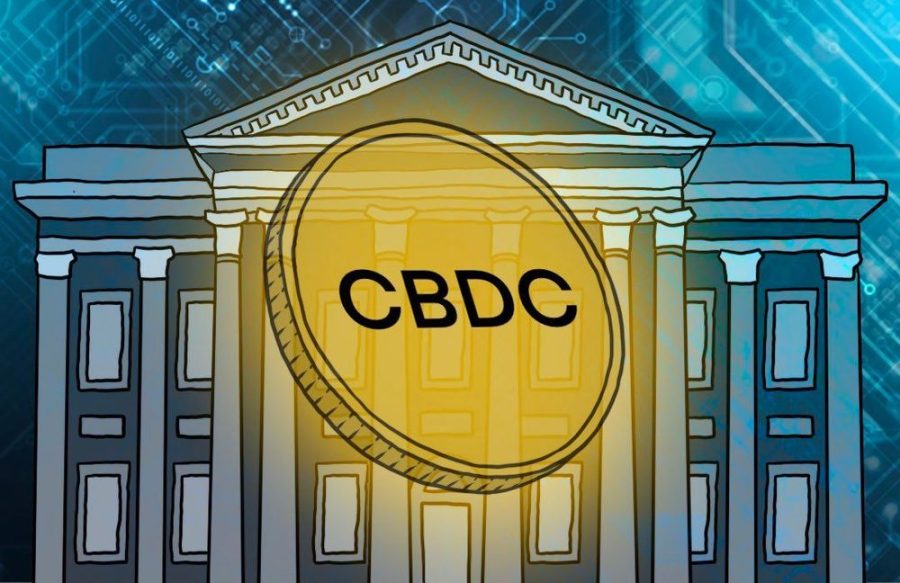The Most Important Discussion of the Decade – Central Bank Digital Currencies
In the ever growing market of digitization, there is a large chance you have heard of cryptocurrencies such as Bitcoin, Etherium, or Tether. These digital assets allow people to exchange their money freely between each other without the need for a middleman or banking institution. These mediums of exchange have had plenty of speculation in the past decade, however in the near future we may come to find out that they have been the precursors for one of the most important economic changes in history.
Since the conception of cryptocurrencies, worldwide central banks have been biting their nails over the fact that there is a demand for individuals to become financially invested in themselves as opposed to paying interest for a bank. The dilemma they face is this: As the public starts to use and trust cryptocurrencies more as a store of value and medium of exchange, the less banks and governments are able to control their financial systems. Evidently, the way governments would be able to interfere in the crypto market is if they A) decrease public trust in crypto, B) add high regulation to crypto, decreasing revenue for crypto companies, or C) create their own digital currency. Can you guess which letter they are choosing? Trick question, a little bit of all three.
The collapse of large name coins and exchanges like Terra Luna and FTX caught the attention of Congress, as millions of people lost their money in these cases. Some members even proposed outright banning cryptocurrencies for the sake of protecting domestic investors, which is ironic because if the goal was to protect citizens from financial loss, then why allow for gambling, lotteries, or even day stock trading for that matter? (A study done by the SEC found that day-traders lose 70% of their money every quarter within 12 months) Despite this, a total crypto ban is unlikely due to the sheer amount of recent institutional investment into the crypto sector, especially because there is a possibility to make profit. This leads me to explain how banks plan to combat the issue of cryptocurrencies – by issuing their own.
Market volatility is often what scares investors away from cryptocurrencies in general, however if someone (banks) were able to regulate and issue their own coins backed by their own blockchain, it would greatly change the public trust from private crypto to institutional crypto. This is essentially what Central Bank Digital Currencies are supposed to do; Central Digital Bank Currencies, CBDC’s for short, differ from other currencies in that they are issued and backed by a central authority rather than being decentralized. This means the value of CBDC’s is directly tied to the issuing party or bank.
This is really nothing new in China, as The People’s Bank of China has been working on a digital version of their currency for several years. Its digital currency, or renminbi, is currently in its pilot stage in several cities, and only looking to expand. The European Central Bank is also very seriously considering the possibility of issuing a digital Euro. In October of 2020, the ECB released a report outlining its plans for a potentially digital euro and announcing that it would analyze public opinion on the matter. This project seems to be 100% in the works, and if you go to the European Central Bank website, at the top of the digital euro page it states:
“We are working with the national central banks of the euro area to investigate whether to introduce a digital euro. It would be a central bank digital currency, an electronic equivalent to cash. And it would complement banknotes and coins, giving people an additional choice about how to pay.”
The United States as well as numerous other nations, western and eastern alike, have also expressed their interests in CBDC’s and are currently taking the steps to make this a reality.
CBDC’s may seem like a very helpful method for a nation to provide secure digital money, however one must question the reasoning behind why we need security in the first place. This is just another example of governments providing “solutions” to problems they have created. Our world is currently entangled in problems created by nations, but projected to be due to the responsibility of consumers – a deeply twisted reality. According to JPMorgan, globalization’s demise is a major theme for 2023 as industrial policies, supply chains, and energy defense continue to decrease in the world. The power balance between supply chains is shifting and as the control of who holds the markets changes, so does the balance of power between countries. Nations will need to be able to provide accessible liquid currency to its citizens, predictably in the form of digital currencies. However, The reason I write this article is to stress the risks that the fellow consumer could find themselves in once CBDC’s become a reality.
- General Monetary Policy Risks – The issuance of CBDC’s could directly impact a central bank’s ability to conduct simple monetary policy and achieve its goals. If people start to greatly make the leap to CBDC’s, banks may not be able to have as much control over its nation’s money supply, and won’t be able to provide accurate interest rates.
- Dangerous Competition in The Private Sector – Private companies may be able to lobby to censor the use of a CBDC on competitors, and make the availability to purchase other items using that CBDC harder.
- Privacy Concerns – A world of CBDC’s means a world where every transaction you make is tracked and logged for the purpose of taxation. One of the most spoken about taxes that could be introduced is a possible carbon tax. The goal of a carbon tax would be to reduce the use of fossil fuels, by issuing a specific CBDC to pay the tax on transactions that create a carbon footprint such as buying meat, plane tickets, etc. This puts a direct responsibility on the consumer, as opposed to targeting the oligopolies responsible for a majority of carbon emissions in our world.
- Artificial Market Stimulation – Since CBDC’s are entirely programmable, they have the potential to be given expiration dates that require you to spend the money before the date arrives. What this does is essentially force you to participate in the economy, however it adds a roadblock to people with long term plans who want to save their money.
- Personal Rating Scores – A personal rating score could potentially be one of the many features that CBDC’s could offer. They would vary from bank to bank, but the general idea stays the same; a score based on what you purchase with your CBDC that would act as a way to promote responsible financial behavior. This poses great privacy concerns, as in order for a rating score to be calculated you would have to give 100% transparency to a banking institution on what you are purchasing. Personal rating scores could be used to further discriminate against certain individuals such as people who have certain characteristics that may be considered less favorable by banks – e.g. your 80 year old grandmother who doesn’t know how to use a touch phone, let alone CBDC’s, would be considered a less favorable person in the eyes of lenders.
So, I come to you with a final question for the future. Could CBDC’s be a start to the centralization of world economic and social decision making? According to the trusted World Economic Forum, the plan for the future is to get rid of interlocking institutions and introduce interlocking regions:
“This [interlocking institution system] is now likely to be replaced with interlocking regions, where there is no institutional or normative core, but competing and cooperative structures of convenience forming global webs of transactions between different regions and different regional institutions. This has to be the heart of managing change together.”
What this could mean is the end of the binary way of seeing the world, east and west, and the introduction of a real functionalist model for the world. After World War II, we were focused on building institutions from the ashes to serve society. Today, the focus is rebuilding a society that serves its institutions.










